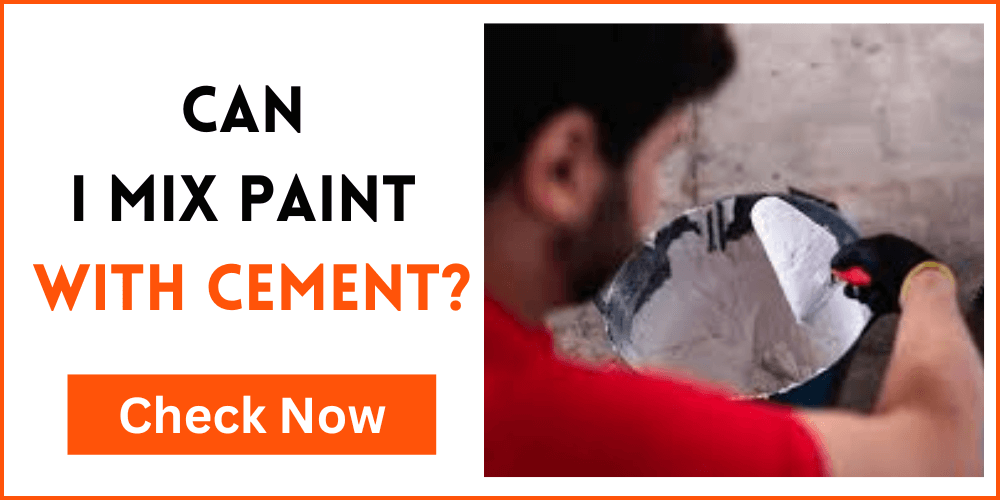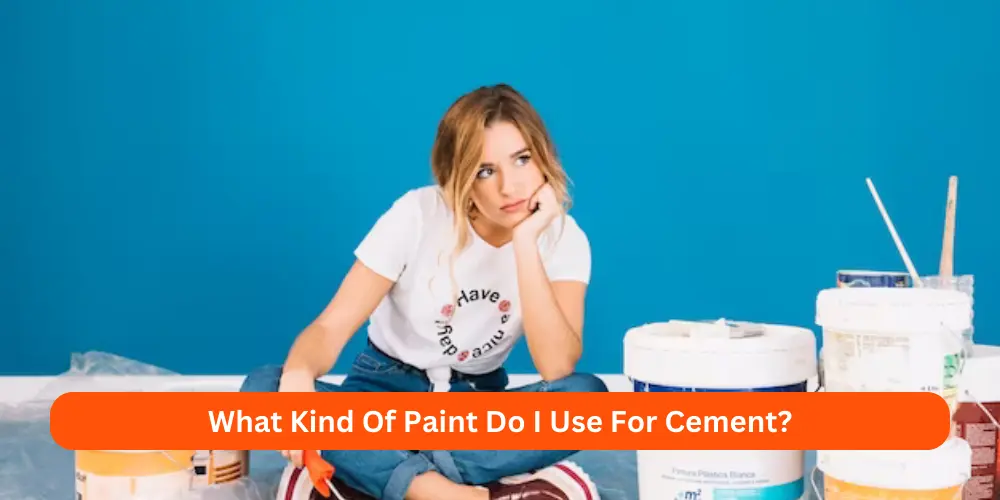

When it comes to home improvement projects, creativity knows no bounds. People often seek unique and eye-catching ways to enhance their living spaces. One intriguing idea that sometimes comes up is mixing paint with cement. But can I mix paint with cement? In this article, we’ll explore this question in detail. We will also delve into the potential drawbacks and challenges. It can provide case studies and examples, and discuss safety and environmental considerations. Explain how to go about mixing paint with cement.
Can I Mix Paint With Cement?
Before we plunge into the bare essentials of blending paint with concrete. Tending to the pragmatic side of home improvement is significant. Adding a sprinkle of variety to your large manifestations can be invigorating. It’s vital to know about the monetary viewpoints. Can I mix paint with cement? Now and again, home improvement ventures might be qualified for charge allowances or credits. Talk with a duty expert to check whether your task qualifies, and watch costs and receipts.
Mixing paint with cement is not recommended, as it can compromise the structural integrity of the cement and result in a less durable finish. Use proper concrete pigments or dyes for coloring concrete instead.
Potential Drawbacks And Challenges
Before you choose to blend paint in with concrete. It’s fundamental to comprehend the likely downsides and difficulties related to this undertaking. While it might appear to be an imaginative method for adding variety to your large ventures, there are a few contemplations to remember so mix it right now:
- Grip Issues: Paint and concrete have various properties, and they may not stick well to one another. This can prompt stripping and chipping over the long haul.
- Durability: Paint may not be as durable as other coloring options designed for cement. Harsh weather conditions, UV exposure, and foot traffic can cause paint to fade and wear off.
- Color Consistency: Accomplishing a reliable variety. While blending paint in with concrete can challenge. Varieties in variety and surface might happen, which can influence the general style of your undertaking.
- Maintenance: Painted cement surfaces may need more frequent maintenance and touch-ups. That is compared to traditional concrete finishes.
Case Studies And Examples
To illustrate the potential outcomes of mixing paint with cement, let’s consider a couple of case studies:
Case Study 1: The Garden Stepping Stones
Imagine you’re creating decorative garden stepping stones using cement. You decide to mix acrylic paint into the cement mixture to give the stones a vibrant and personalized touch. The stones look beautiful. But after a few seasons of exposure to rain and sunlight, the paint begins to fade and peel. Leaving your once-charming stepping stones looking worn and weathered.
Case Study 2: The Driveway Experiment
In an attempt to revamp your old concrete driveway. You decide to mix latex paint with cement to give it a fresh and colorful look. While the driveway looks fantastic, it shows signs of wear and tear. The constant pressure from tires and exposure to the elements. That can cause the paint to chip, revealing the plain concrete underneath.
Mixing Paint With Cement
Now that we’ve covered the potential challenges and safety considerations. So let’s explore how to mix paint with cement:
- Choose the Right Paint: Opt for a high-quality, exterior-grade acrylic paint for the best results. These paints are designed to withstand outdoor conditions.
- Mix in Small Batches: Instead of adding the paint to a large batch of cement. Mix it in smaller batches to ensure an even distribution of color.
- Measure: Use precise measurements to achieve the desired color intensity. Start with a small amount of paint and increase it until you achieve the color you want.
- Mix: Stir the paint into the cement mixture to ensure an even distribution of color. Use a mixing stick or a drill with a mixing attachment for larger projects.
- Test on a Sample: Before applying the colored cement to your project. Test it on a small, inconspicuous area to check the color and adhesion.
Results
By resolving the confusion can I mix paint with cement? The aftereffects of blending paint in with concrete. It can differ contingent on factors like the kind of paint utilized. The nature of the blending system. The ecological circumstances the undertaking will confront. While it’s workable to do vivid and engaging outcomes. It’s critical to remember the potential downsides referenced before. Regular maintenance and touch-ups may be required to maintain the desired look.
What Kind Of Paint Do I Use For Cement?

When painting cement surfaces, it is recommended to use durable and waterproof paints such as acrylic latex, epoxy, or masonry paints. These types of paint offer good adhesion and protection against weathering. Brands like Sherwin-Williams Porch and Floor Enamel, Rust-Oleum EPOXYSHIELD, and Flex Seal Liquid Rubber Sealant Paint are popular choices.
What Is Cement Paint?
Can You Put Paint Into Concrete?
You cannot put paint into concrete. Concrete is a porous material, and paint alone won’t adhere to or provide lasting color. To color concrete, use specialized concrete stains or dyes designed for this purpose. These products penetrate the concrete’s surface and provide a more durable and attractive finish. For preparation and application techniques. Proper surfaces are essential for achieving the desired result when coloring concrete.
How Do You Add Color To The Cement Mix?
To add color to a cement mix, use pigments designed for concrete, available in various forms like powder, liquid, or integral color. Start by measuring the pigment according to the manufacturer’s instructions. Then mix it with dry cement or aggregates before adding water. Introduce water while blending until you achieve the desired color consistency. Ensure even distribution throughout the mix. To achieve a uniform color when the concrete sets. Be mindful of the pigment-to-cement ratio to avoid compromising structural integrity.
Final Thoughts:
In the world of home improvement, the idea of mixing paint with cement can be a tempting one. It allows for creative expression and personalization of concrete projects. Yet, it’s important to be aware of the potential challenges.
That includes adhesion issues, durability concerns, and maintenance requirements. Before embarking on a paint and cement mixing project. Consider alternative methods such as concrete stains, integral color, and concrete dyes. Concrete overlays for a more reliable and lasting color solution.
Sources:
- By Robert Hampson, Can paint be added to cement? Posted 1 Year Ago.
- Byu/lily_amore, Should I paint cement floor? Posted 7 Months Ago.
